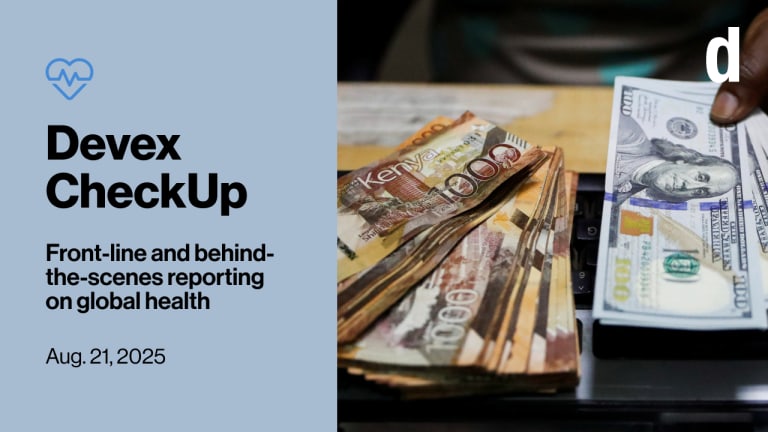
For those in my field, the adoption of the Sustainable Development Goals by the United Nations in September represented a critically important but little-noticed milestone: Sexual and reproductive health and reproductive rights issues are now recognized explicitly — and from the outset — as integral to achieving those goals.
This is remarkable, especially for those of us who remember what happened previously. The Millennium Development Goals, adopted in 2000, completely omitted reproductive health and it took a sustained campaign by SRHR advocates to add a reproductive health target in 2007.
Not so this time around, with these issues getting in on the ground floor. And with good reason: We know that for a woman, the ability to decide whether and when to have children is critical, not only for her own health and social and economic well-being, but also that of her children, her family, and, more broadly, her community as a whole.
That is why progress on SRHR is inextricably linked with larger development goals like reducing poverty, achieving better health and ensuring equal rights for women and girls.
Still, having these linkages officially recognized within the SDGs is just a milestone, not the finish line. We need to make the connection between lofty development goals and what’s happening on the ground. It would cost on average just $25 per reproductive-age woman — roughly double the current level of spending — to provide a complete package of essential sexual and reproductive health services to all women in developing regions each year. This includes contraceptive services, pregnancy and newborn care, services for pregnant women living with HIV, and treatment for four other sexually transmitted infections.
Many countries have been making significant strides in expanding the coverage and quality of these essential services, which in turn have contributed to significant reductions in maternal, newborn and child mortality. But much more remains to be done to ensure that services are available, accessible, acceptable and of reasonable quality.
Linking people with the services they need is critical, and measuring progress is key in guiding implementation and verifying success in achieving the 17 SDG goals and 169 targets. To that end, the U.N. Statistical Commission will formally approve a global monitoring framework, including a set of indicators, for the SDGs in March 2016.
To help inform this process, the Guttmacher Institute, in consultation with a wide range of stakeholders and technical experts, has developed a list of recommended indicators relating specifically to SRHR. We assessed whether each indicator reflects core SRHR principles and outcomes, whether it is identified as a high priority by advocates, and whether reliable data are either available or could become available for most countries. The indicators that emerged from this process fall under three different SDG goals: those on health (SDG 3), education (SDG 4) and gender equality (SDG 5).
But while the SDGs are comprehensive, visionary and inspiring in many ways, they are also limited in the scope of SRHR issues they address. This is, in part, the result of necessary brevity given the many issues covered by the SDGs. But it’s also because of ongoing ideological and religious opposition to a broad-based SRHR agenda from a global coalition of conservative governments and activists. As a result, the SDG indicators are unlikely to include certain critically important elements of SRHR, including safe abortion care, nondiscrimination based on sexual orientation or gender identity, and the need for high-quality, confidential and timely sexual and reproductive health services.
To address these likely gaps, we have partnered with The Lancet to establish a commission on SRHR in the post-2015 world. The Guttmacher-Lancet Commission will articulate a vision, define priorities, and produce a set of SRHR recommendations on the basis of the best available evidence. These recommendations are expected to be released in 2017 and will make the case for policies and programs to turn that vision into reality over the next 15 years.
There is much that countries, including the United States, can already do to get a head start on turning the SDGs into meaningful action. As the single largest donor to the developing world — for family planning and reproductive health assistance, as well as more generally — the U.S. has been a strong leader in this area for decades but is still not meeting its fair share of donor contributions. The U.S. government should increase its financial commitment to family planning and reproductive health abroad to at least to $1 billion annually, from the current $610 million.
Additionally, among other steps, the U.S. Agency for International Development could help refine existing data collection systems, such as the demographic and health surveys, and help create a new monitoring framework that more closely reflects current priorities in the field.
Although there has been major progress in recent decades, the global community must now expedite and expand that progress to be more inclusive of disadvantaged groups and more comprehensive, for instance by including sexual rights. Ultimately, a range of factors — funding, political will, creativity, and sheer hard work — will need to come together to turn the SDG declaration into action.
Guttmacher’s suggested SDG indicators and the work of the Guttmacher-Lancet Commission are intended to provide a roadmap to help find ways to identify, measure, advance and ultimately attain these priorities. The end goal — to enhance the lives of people across the world — will make all the effort worthwhile.
To read additional content on global health, go to Focus On: Global Health in partnership with Johnson & Johnson.








